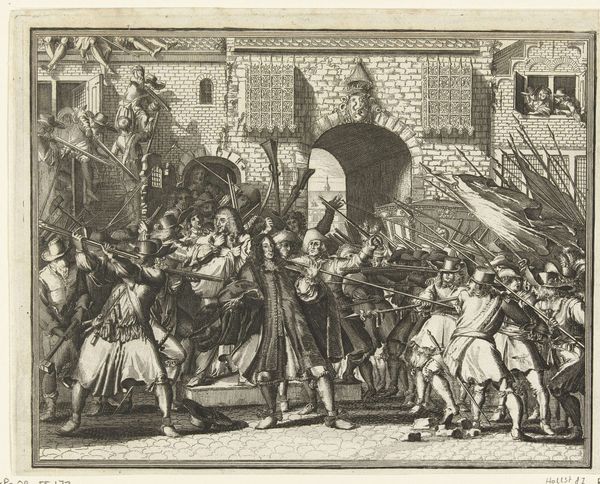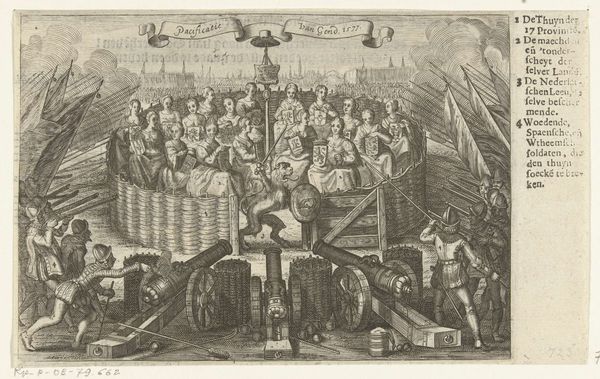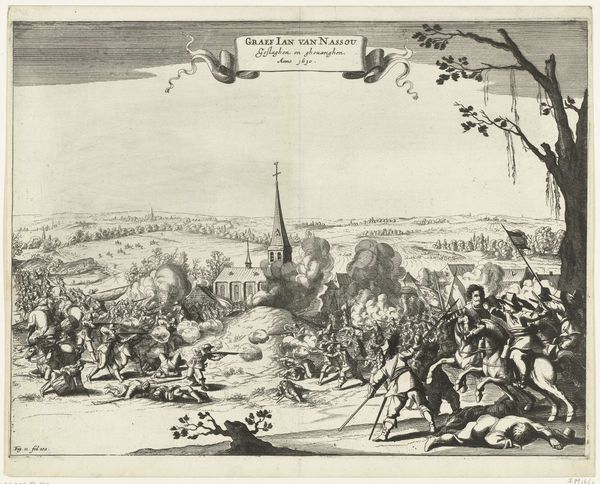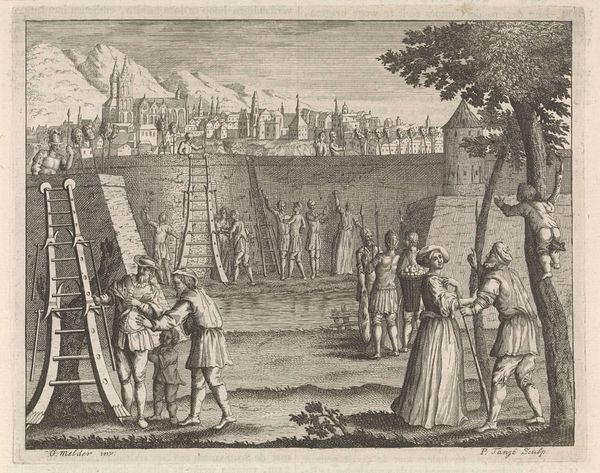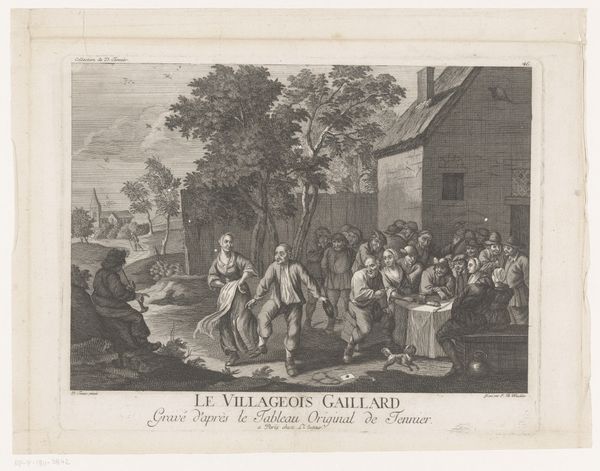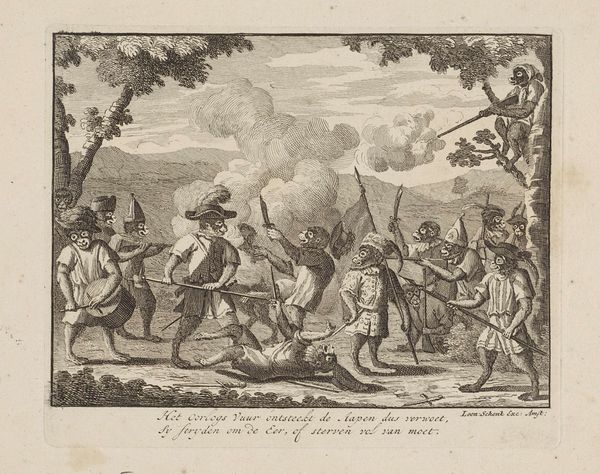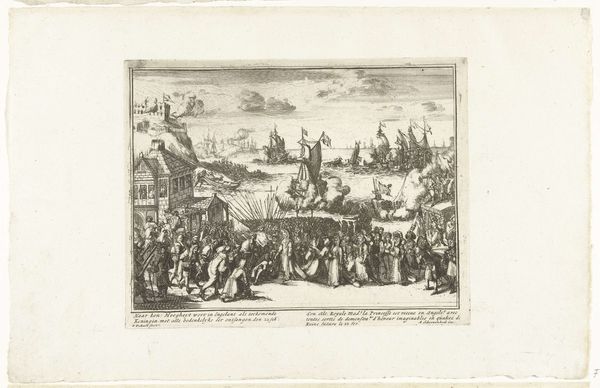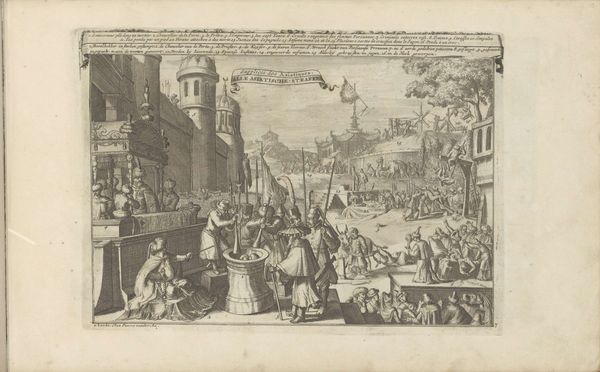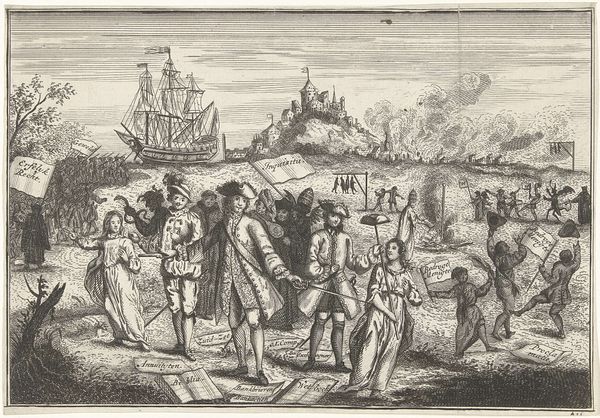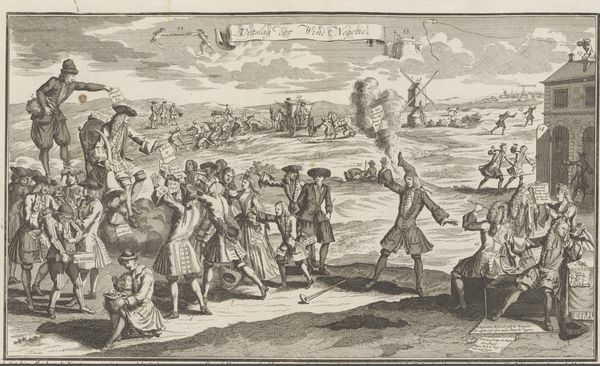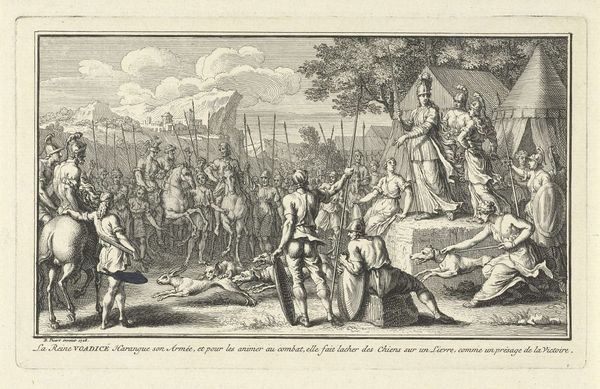
print, engraving
#
narrative-art
#
baroque
# print
#
caricature
#
old engraving style
#
figuration
#
genre-painting
#
engraving
Dimensions: height 166 mm, width 212 mm
Copyright: Rijks Museum: Open Domain
This etching, "Aap als kwakzalver," made around 1720 by Matthijs Pool, presents a scene teeming with monkey figures, a satirical commentary on human folly. At its heart lies the figure of the charlatan monkey, a jester-like figure peddling his wares. This image resonates with the long-standing tradition of the "monkey as artist" motif—a symbol of misguided imitation and the inversion of order. We might recall similar imagery in earlier Flemish paintings where apes mimic human actions, exposing vanity. Here, Pool's monkey mimics the theatrical gestures of quack doctors, promising cures while deceiving the gullible. This connects to broader cultural anxieties about authenticity versus pretense. The performance mirrors a deep-seated psychological tension: the fear of being duped. The use of animal figures triggers a primal response, reminding us of our own animalistic nature, of desires that make us vulnerable to manipulation. It’s a timeless drama playing out on the stage of human consciousness.
Comments
No comments
Be the first to comment and join the conversation on the ultimate creative platform.
